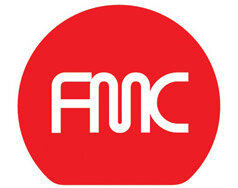About Copyright
Copyright is defined as the set of exclusive rights granted to the creator of an original work, including the right to copy, publicly perform, distribute and adapt the work.
These rights can be licensed, transferred and/or assigned. Copyright is an intellectual property right. It allows the creators of original works to control how their work is used and to benefit financially from its use. Copyright in Ireland is regulated by statute (The Copyright and Related Rights Act 2000).
In Ireland the copyright in a literary, dramatic, musical or artistic work expires 70 years after the death of the author, after which the work is said to enter the public domain. This means that work may then be used or modified or republished by any person, without fear of copyright infringement.
Copyright Can Protect:
Literary works, including novels, instruction manuals, computer programs, song lyrics, newspaper articles and some types of database.
Dramatic works, including dance or mime.
Musical works.
Artistic works, including paintings, engravings, photographs, sculptures, collages, architecture, technical drawings, diagrams, maps and logos.
Layouts or typographical arrangements used to publish a work, a book for instance.
Recordings of a work, including sound and film.
Broadcasts of a work.
Copyright applies to any medium. This means that you must not reproduce copyright protected work in another medium without permission. Some examples include:
Publishing photographs on the internet
Making a sound recording of a book
Making a painting of a photograph
A copyright protected work can have more than one connected to it. For example, an album of music can have separate copyrights; one for each individual song, a separate copyright for the sound recordings, a separate copyright for the artwork and so on.
Copyright does not protect an idea. A property right is not copyright protected until it is presented in a material form. So for a piece of music or song to become copyrighted it is not sufficient for it to exist in the mind of the composer but instead it must be in a written form or recorded.
Once in this material form, the protection of the copyright legislation comes into effect without any formal procedure. Countries such as the United States use a system of copyright registration known as ‘copyrighting’ songs. However, in Ireland, this is not necessary.
A concern some composers might have is that of plagiarism, i.e. somebody else saying they had written the work. To protect against this, it is common practice when a composer or songwriter creates a piece of music to record it on a CD or write it out in manuscript form and lodge it in a safe place such as with a solicitor or a bank manager. Alternatively, posting it by registered mail to himself/herself also protects against plagiarism. In this way if a dispute regarding ownership arises he/she will be in a position to prove that it was in existence at a particular date (i.e. the date stamped on the registered mail envelope or the recorded date of receipt by the solicitor).
For additional information and FAQs covering copyright protections for music creators visit:
https://www.imro.ie/music-creators/about-copyright/faqs-on-copyright/

